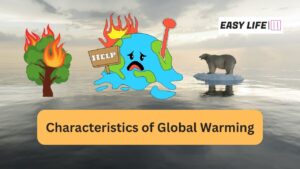Biodiversity, the variety of life on Earth, forms the foundation of our planet’s ecosystems. As climate change alters the world’s environment, it poses substantial challenges to the delicate balance of biodiversity. In this article, we explore the myriad ways climate change affects biodiversity, weaving a complex tale of adaptation, survival, and loss.
Table of Contents
ToggleWhat is Biodiversity?
Biodiversity, or biological diversity, refers to the vast array of life forms present on Earth, encompassing the variety of species, their genetic makeup, and the ecosystems they inhabit. This incredible diversity plays a crucial role in maintaining the health and resilience of ecosystems while also providing essential resources and services to support human well-being.
1. Components of Biodiversity
A. Species diversity represents the multitude of different species found within an ecosystem. This includes plants, animals, fungi, and microorganisms, all contributing to the intricate web of life.
B. Genetic diversity refers to the variation of genetic information within a species, which is vital for adaptation and resilience in the face of environmental changes.
C. Ecosystem diversity encompasses the wide range of ecosystems found on Earth, such as forests, grasslands, wetlands, and coral reefs, each with its unique assemblage of species and interactions.
2. Benefits of Biodiversity
A. Ecosystem services, such as nutrient cycling, water purification, and pollination, are essential functions provided by diverse ecosystems.
B. Biodiversity supports human needs by supplying food, medicine, and raw materials crucial for our survival and well-being.
C. Cultural and recreational benefits, including aesthetic value, spiritual significance, and opportunities for eco-tourism and outdoor recreation, enrich our lives and contribute to our connection with nature.
IV. Threats to biodiversity
A. Habitat destruction, resulting from deforestation, wetland drainage, and urbanization, is a primary driver of biodiversity loss.
B. Pollution, including chemical contaminants and air, water, and soil pollution, poses significant threats to species and ecosystems.
C. Overexploitation, such as overfishing, poaching, and unsustainable resource use, can lead to the decline or extinction of species.
D. Climate change, characterized by rising temperatures and altered precipitation patterns, affects species and ecosystems, exacerbating existing threats to biodiversity.
V. Conservation efforts
A. Protected areas, including national parks and reserves, provide crucial sanctuaries for wildlife and their habitats.
B. Species recovery programs, such as captive breeding and habitat restoration, aim to boost dwindling populations and prevent extinction.
C. Sustainable resource management, involving practices like sustainable forestry and regulated hunting and fishing, helps preserve biodiversity while meeting human needs.
D. International cooperation, through frameworks like the Convention on Biological Diversity, the Endangered Species Act, and the International Union for Conservation of Nature (IUCN), fosters collaboration in conservation efforts.
Here Are Some Points: Climate Change Affects Biodiversity
-
Temperature Shifts: A Race Against Time
Global temperature changes are reshaping ecosystems, forcing species to adapt or relocate:
- Range shifts: Species may move poleward or seek higher elevations to escape increasing temperatures, disrupting ecosystems and altering biodiversity patterns.
- Habitat fragmentation: Barriers to species migration can result in isolated populations, limiting genetic diversity and increasing vulnerability to environmental changes.
- Local extinctions: Species unable to adapt or find suitable habitats risk extinction, further eroding biodiversity.
-
Ocean Acidification: A Silent Threat to Marine Life
Rising CO2 levels lead to ocean acidification, posing significant risks to marine biodiversity:
- Coral reef decline: Acidic waters impede coral growth, endangering vital coral reef ecosystems and the vast array of species they support.
- Shellfish vulnerability: Ocean acidification negatively affects shell-building organisms, potentially destabilizing marine food webs.
- Ecosystem shifts: Changes in species abundance and distribution can have far-reaching consequences for marine ecosystems and their intricate connections.
-
Phenological Mismatches: The Disruption of Nature’s Timetable
Climate change can alter the timing of biological events, resulting in phenological mismatches that disrupt species interactions:
- Mismatches in pollination: Shifts in flowering times and pollinator activity can impact plant reproduction, affecting food resources and habitat availability for countless species.
- Altered predator-prey dynamics: Changes in the timing of migration or hibernation can disrupt food availability, leading to population declines or even extinctions.
- Ecosystem imbalances: The cascading effects of disrupted species interactions can reverberate through ecosystems, jeopardizing their overall stability and biodiversity.
-
Invasive Species and Disease: Climate Change’s Unwelcome Guests
Invasive species and diseases present significant challenges to biodiversity, with climate change exacerbating these issues:
- Invasive species advantage: Changing environmental conditions can create opportunities for invasive species to establish and outcompete native organisms, reducing biodiversity.
- Disease spread: Warmer temperatures can facilitate the transmission of pathogens and parasites, threatening the health and survival of various species and impacting ecosystem health.
Conclusion: Climate Change Affects Biodiversity
Climate change’s impact on biodiversity is multifaceted and complex, with far-reaching consequences for the intricate web of life on Earth. It is crucial to prioritize climate change mitigation, conservation efforts, and sustainable practices to safeguard our planet’s rich biodiversity and maintain the delicate balance of our environment.
How Climate Change Affects Insect-Plant Interactions: A Complex Tale of Adaptation and Survival
FAQ: Climate Change Affects Biodiversity
Q: What is biodiversity?
A: Biodiversity, or biological diversity, refers to the variety and variability of life on Earth. It includes the wide range of species, their genetic makeup, and the ecosystems they inhabit. Biodiversity is crucial for maintaining ecosystem health and providing essential resources and services to support human well-being.
Q: Why is biodiversity important?
A: Biodiversity is important for several reasons. It supports ecosystem services such as nutrient cycling, water purification, and pollination. Biodiversity also provides resources for humans, including food, medicine, and raw materials. Additionally, it offers cultural and recreational benefits like aesthetic value, spiritual significance, and opportunities for ecotourism and outdoor recreation.
Q: What are the main threats to biodiversity?
A: The main threats to biodiversity include habitat destruction (e.g., deforestation, wetland drainage, and urbanization), pollution (e.g., chemical contaminants and air, water, and soil pollution), overexploitation (e.g., overfishing, poaching, and unsustainable resource use), and climate change (e.g., rising temperatures and altered precipitation patterns).
Q: What is being done to conserve biodiversity?
A: Conservation efforts to preserve biodiversity include establishing protected areas (e.g., national parks and reserves), implementing species recovery programs (e.g., captive breeding and habitat restoration), promoting sustainable resource management (e.g., sustainable forestry and regulated hunting and fishing), and fostering international cooperation (e.g., Convention on Biological Diversity, Endangered Species Act, and International Union for Conservation of Nature).
Q: How can individuals help protect biodiversity?
A: Individuals can help protect biodiversity by making sustainable choices in their daily lives, such as reducing waste, conserving water and energy, using eco-friendly products, and supporting local and organic agriculture. They can also participate in habitat restoration projects, advocate for environmental policies, and raise awareness about the importance of biodiversity within their communities.










1 thought on “How Does Climate Change Affects Biodiversity?”
Pingback: What Are Five Threats to Biodiversity? - 2023